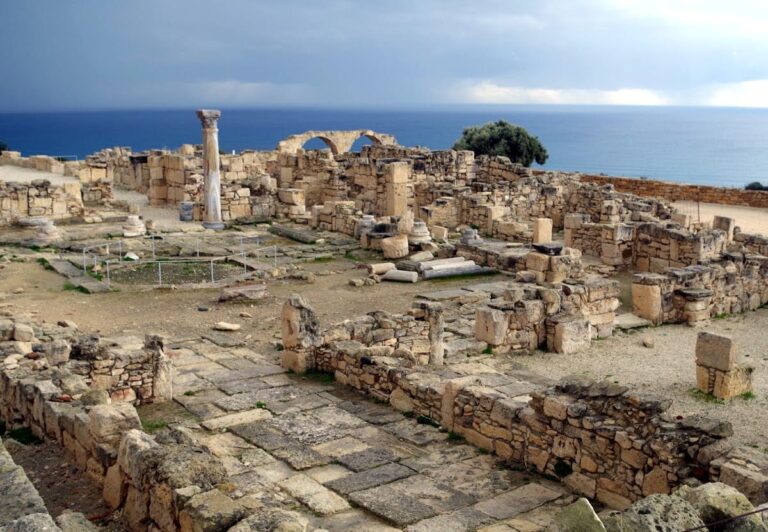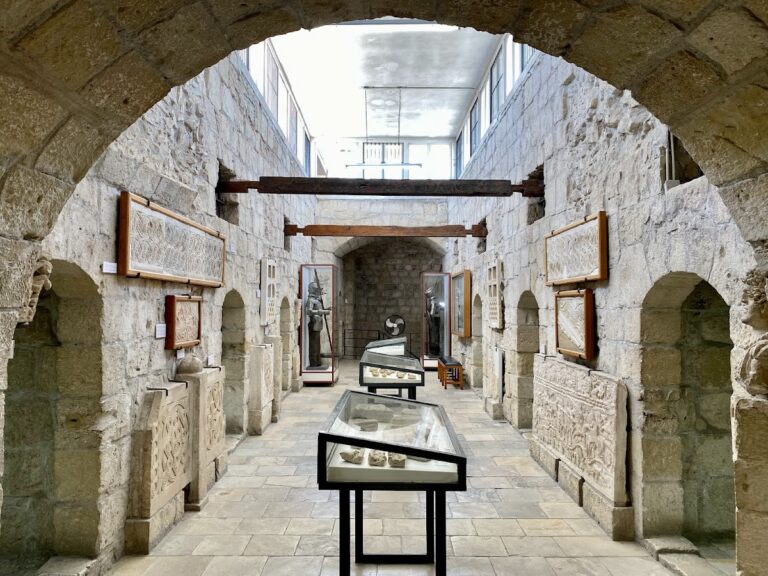Kolossi Castle: A Crusader Stronghold and Administrative Center in Cyprus
Visitor Information
Google Rating: 4.4
Popularity: Medium
Google Maps: View on Google Maps
Official Website: www.mcw.gov.cy
Country: Cyprus
Civilization: Medieval European
Remains: Military
History
Kolossi Castle stands near the village of Kolossi, within the municipality of Limassol in Cyprus. It was established by the Frankish Crusaders during the early 13th century as a strategic and administrative stronghold on the island. The initial fortification likely dates to around 1210, built after King Hugh I granted the surrounding lands to the Knights Hospitaller, a religious and military order also known as the Order of St. John of Jerusalem.
Throughout the 1300s, Kolossi Castle played a pivotal role for the Knights Hospitaller, becoming their headquarters between 1301 and 1306 after their loss of Acre, a previously important Crusader city. However, control of the castle shifted when the Knights Templar, under commander Amalric, took possession from 1306 until 1310. The Hospitallers regained the site in 1308 following papal decisions that led to the suppression of the Templar order. During this period, the Hospitallers moved their main base to Rhodes in 1310 but maintained a garrison at Kolossi as a regional commandery, overseeing local affairs.
By the late 14th century, the castle’s function had evolved from primarily military to a more administrative and residential role. In 1380, the Knights Hospitaller emphasized the castle’s importance as the residence for their Grand Masters and as the center managing the economy of about sixty neighboring villages. This included supervising regional production of Commandaria, a sweet Cypriot wine with deep historical roots.
Kolossi endured several episodes of destruction in the 14th and 15th centuries. Genoese forces attacked and damaged the castle in 1373. Later, Mamluk Egyptian troops inflicted multiple assaults in 1402, 1413, 1425, and 1426. Additionally, natural disasters such as earthquakes contributed to its deterioration. Despite this, reconstruction efforts began in 1454 under the direction of Grand Master Louis de Magnac, resulting in the current form of the castle that remains today.
The political landscape shifted again in 1488 when Queen Catherine Cornaro transferred control of Cyprus to Venice. At this time, Kolossi Castle and its estates were granted as a hereditary fief to George Cornaro, a member of the queen’s family. The Cornaro family retained ownership through subsequent Ottoman rule until 1799, after which the title passed to the Motsennigo family.
Remains
Kolossi Castle is a robust stone fortress arranged within a roughly rectangular courtyard measuring approximately 30 by 40 meters. Constructed primarily of stone, the castle rises three stories high, with walls up to 1.25 meters thick and a maximum height of about 21 meters, showcasing the defensive needs of its time.
The ground floor served as storage space, designed to safeguard goods such as sugar, a major export of medieval Cyprus. This level also contains two underground cisterns that collected and stored water, reflecting the castle’s self-sufficiency during sieges or dry periods. These cisterns remain intact and provide insight into the water management techniques of the inhabitants.
Entry to the castle’s first floor was formerly secured by a drawbridge, which offered protection against unwelcome visitors. Inside, this level housed two spacious rooms: one featured a wall painting depicting the Crucifixion of Jesus, highlighting the site’s religious function for the castle’s occupants. The adjacent room, equipped with a fireplace, was used for dining and daily living activities, indicating a blend of practicality and devotion in castle life.
The second floor contained the living quarters, providing private spaces for residents. Above this, the roof was constructed for defense, outfitted with embrasures—openings in the walls for shooting—and machicolations, stone projections with openings allowing defenders to drop objects or pour substances on attackers below.
On the eastern facade of the castle, a distinctive cross-shaped niche displays four coats of arms. These include those of the Kingdom of Cyprus, Grand Master Louis de Magnac, and two other Grand Masters, Jean de Lastic and Jacques de Milly, linking the structure visually to its historical leaders and political affiliations.
Today, visitors can observe the preserved residential tower along with fragments of the adjacent sugar mill and refinery, which reflect the castle’s economic role. Portions of the defensive walls surrounding the castle remain visible, outlining the extent of the medieval fortress in its heyday.







